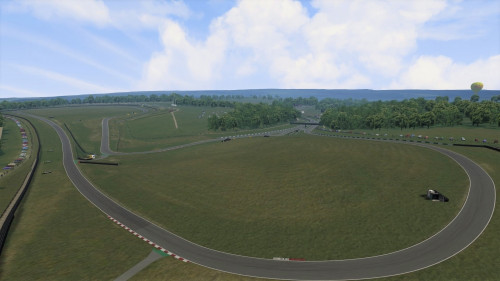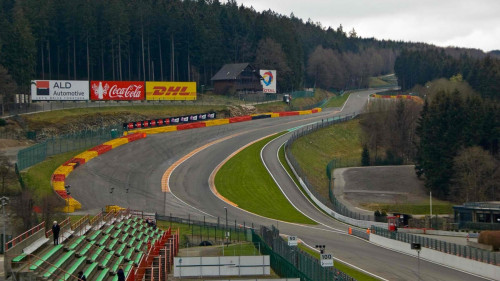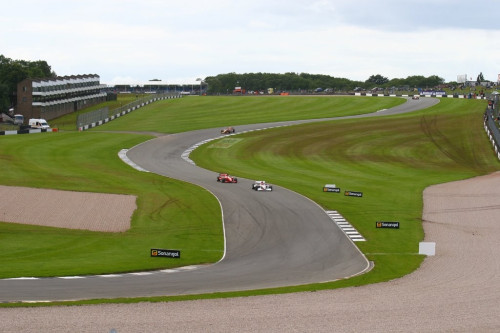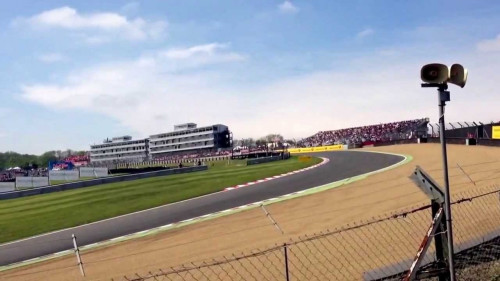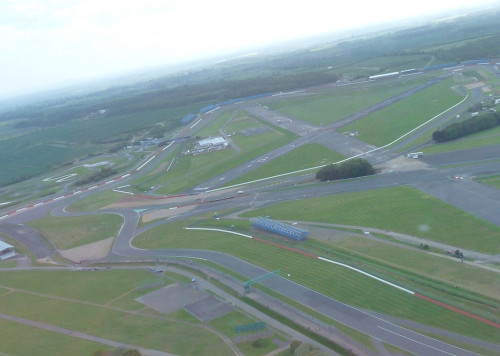Le Mans - Porsche Curves and Maison Blanche
In 1984, I was offered a drive in a Group C2 car at the Le Mans 24 hours. The day job was on a weekly motorsport paper whose editor said if I was late for work on the Monday, I needn’t bother coming back. Never mind the then unique access which might have generated some interesting copy, for one issue I might have been more significant than he was… So I never did the Big Race. The chance has gone now, so I'm very happy that exactly two decades later, I was able to drive both Nick Mason’s Ferrari GTO and an Alfa T33 3-litre V8 prototype at the Le Mans Classic, the second running of what is now an established event. I'm told it cost a million Euros to close the roads for the two days but the Classic gave exactly similar access to the 24 hours track, and most important, you could do it at night; in the Alfa at nearly 200mph, when the otherwise ordinary stretch of road between Mulsanne Corner and Indianapolis becomes the most exciting imaginable and not because it is complex, but because it is so far outside any other driving experience. And, as the organisers know only too well, it is so very exclusive; you can only do it on three days of the year, only if you have entered the race, and more important at the top level, qualified. There are some really quick corners on the rest of the eight and a bit miles too, which is another special detail. Most tracks have to be configured to suit a variety of cars, so they can't suit everybody. What is fourth gear in a Formula Three equipped with wings and slicks, is second in an upmarket road car on road tyres.
The Porsche Curves lie a few hundred metres off the public road, leading to the infield, and they are typically fast and sweeping. If you include the super quick dive off the D139 - and the new Maison Blanche - there are no fewer than seven apices to contemplate, most of them blind on approach. It's where today's top-level cars have some of their biggest problems with traffic, especially at night. The driver behind can't always know whether the driver in front has seen him and if not, is then likely to come in for the apex, and if they do force an overtake on one side, the faster car will then find itself in the wrong place for the next corner. The Curves themselves also take a bit of learning. Even at the top level – and because you can only research them every four minutes or so - you still have to find out how much speed your car will allow you to carry, and given that speed and amount of grip are usually design-related, the extent of each at your disposal determines where you point the car’s nose…
Let's assume you've worked out how much of the energy gathered along the D139 can stay on board as you sweep from public to private road (I'm still not exactly sure myself...) and that you have managed to ease the car back over to the right hand side of the road. The two left-handers which follow are linked and there are two distinct clipping points. Let the car run out to the right hand verge in the middle and pick an apex far enough round the last part, to ensure you can get over to the left hand side of the road for the next right. Like a lot of the corners at Le Mans, aiming far enough ahead is a good initial discipline. How you take the one before always affects how you take the next and the long right hander that follows is the Porsche Curves' real challenge.
Back in 2004, a French tv crew had marched into our garage, and with barely a word, had set about fitting a camera to the Alfa. They left without saying much too, but I'm glad they came. Preserved on grainy VHS, the legacy is a precious memento, and so is the noise. The T33 is powered by a 3-litre V8 that sang all the way to 9,000rpm, but when I watched the sashay through the Porsche Curves, it looked a bit, well... tentative. A lap time of four and a half minutes or thereabouts and a few red flags had reduced an hour's qualifying for two drivers to about three laps each - including in and out - so the start of the race was lap four. See what I mean about access. But I still remember balancing the car on the edge of a loose tail, trickling in as much power as treaded tyres could take. It certainly didn't feel pedestrian then, which is my point about available grip versus a fast and flowing road.
As you commit to that long right hander, it's so very tempting to bring the car across the road too early for an apex you still can't see, and then find the road turning yet more to the right. You end up too far to the left for the last left hander, which is why the organisers have since added so much extra tarmac the other side of the exit kerb. A bit like Spa, tarmac off-piste doesn't please the purists, but too many people in the gravel spoils a race. You can't have it both ways. I drove the Curves again a couple of years ago for a fliming session in an Audi A4 diesel and the speedo said nearly 100mph on the way in, but a set of road tyres said an apex a very long way rouand - quite close to the entry for the last left hander - was a good plan if I wanted to drive the car back to Blighty. Then, it was a smooth change of direction and aim the bonnet as straight as possible, and still the A4 needed all the road. The record this time is GoPro-sharp, and it still looks so much slower than it felt...
Maison Blanche follows the Porsche Curves, previously a kink on the public road but the scene of too many nasty accidents and so the original was bypassed in 1972 by the Porsche Curves which are one of the 15 new configurations since 1923. New Maison Blanche is not really much of a challenge to car or driver, but it does act as a kind of filter. The road is heading for the Ford chicanes which lead to the pit straight and the fast boys at the top level have to make sure they don't get caught in a queue of GT cars. It will only make the on-board look slower than it really is...
The Charlies at Cadwell Park
Charlies 1 and 2 are a brilliant challenge. Blind on entry, you use the gradient to slow the car and make it point.
Cadwell Park is one of Britain's oldest circuits, dating back to 1934 when a farmer by the name of Wilkinson laid down a three-quarter mile chalk trac... Read More
Raidillon at Spa-Francorchamps
Eau Rouge is the corner most people know at Spa, but Raidillon which immediately follows, is the real challenge
Spa-Francorchamps which lies in Belgium's Ardennes forest just over the hills from The Nurburgring, is an absolute favourite with racers the world ove... Read More
The Craner Curves at Donington Park
What you can't see on a track is always more exciting...
Craner Curves - Donington Park
Donington Park is the only circuit in the UK which existed before the second world war and is still operational today,... Read More
Brands Hatch - Paddock Hill Bend
One of the country's more intimidating corners, it looks easy from the grandstand opposite, less so from the cockpit of a car.
Paddock Hill Bend, Brands Hatch Indy Circuit
There's no doubt that Brands Hatch Indy is a great place to drive and it’s a great place fo... Read More
Silverstone
Maggots, Becketts and Chapel.
The sequence on Silverstone's Grand Prix track which is Maggotts, Becketts and Chapel has always been exciting because like much of the rest of Silver... Read More
